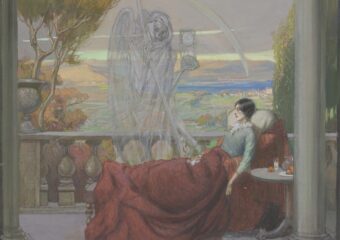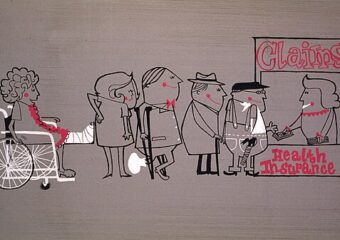Léa Mysius – writer, producer, director
F Comme Film, Trois Brigands Productions, Ciné@ – production companies
2017
In French with English subtitles
Seen as streamed on MUBI
Run time – 105 minutes
According to the Art:
Thirteen-year-olds often feel a lot of anxiety and uncertainty, and their developing brains have yet to gain control of risky impulses. This movie explores the effects of ratcheting up these anxieties and uncertainties.
Synopsis:
The movie opens with an idyllic, bright, summer beach scene at a seaside resort somewhere along the French coastline. The beach teems with waders and sunbathers enjoying the weather and each other. Ava, a thirteen-year-old girl vacationing with her single mother and baby sister, is napping on a rock wall. A large, black dog makes its away along the beach and encounters the sleeping Ava. She awakes, startles, and the dog runs off. She follows the dog to its owner, Juan, who is in the midst of a lover’s spat. The police come and take Juan away—he doesn’t have “papers.” This is not the last time Ava meets both Juan and his dog.
While on this holiday, Ava sees her ophthalmologist who informs her that her eyesight is worsening—she has retinitis pigmentosa, and a form that progresses to blindness more rapidly than other forms. The ophthalmologist tells Ava:
Your field of view will shrink and you’ll lose your night vision before the circle closes. It can happen very young…Soon you won’t see well in low light…at night when a place is poorly lit, say…You’ll lose your sight soon.
Ava is shattered. She wishes that the ophthalmologist was dead: “He ruined our summer,” she says to her mother, who in response pledges, “we’ll have a great summer. We have two weeks. That’s good. They won’t spoil our summer. Screw them.” What happens during these two weeks comprises most of the movie.
Ava sees her prospects for the future vanish as her vision deteriorates. She needs to get as much life in as possible before then, and it begins with the time she has left at the beach. Feeding this urgency is Ava’s concern that the end of civilization could be nearing based on evidence a recreation staff member provided, and the approval her mother gives for engaging in sex: “My first time was very early. I was thirteen like you. I understand you wanting to try. I couldn’t stop you. You’ll do as you want, I know.” With this permission from her mother and feeling “My mother is probably unhappy with a daughter like me,” little pressure is left that could counter Ava’s desire to accelerate the accumulation of life experiences, no matter how risky.
And so Ava is off and running, making her first act stealing Juan’s dog. This eventually brings them together. Juan is older, looking like he’s in his late teens, and he’s on the lamb. She joins him and experiences sex, plunder, violence, and close calls with police. We are left wondering what will happen to Ava; the circle is closing.
Analysis:
Thirteen-year-olds, even under safe and stable conditions, often feel a lot of anxiety and uncertainty, and their developing brains have yet to gain control of risky impulses. In this movie, the writer, director, and producer, Léa Mysius, explores the effects of ratcheting up these anxieties and uncertainties by adding sure, near-term blindness into the mix of an over-matched, single mother, and an environment full of temptations. She shows a dreadful picture of what can result.
Ava is not oblivious to her predicament and what drives her behaviors and desires: “I can’t see in low light now. I thought I was ready, but it came as a shock…Will my dreams vanish too? I’d gouge out my eyes to end it…I want to see him, I want to be saved.” Ava can even feel herself getting to a breaking point at times: “Sometimes I want to die. I think I’ll kill myself.” And, while she’s gone and on the run with Juan, she calls her mother letting her know she’s ok (she’s not) and hoping their connection can remain intact.
Mysius said in an interview, that the idea for this movie came to her during a time when she had migraine headaches forcing her into dark places for long periods. That experience made her wonder what it would be like if faced with “a more serious disease.” Giving her character retinitis pigmentosa does the trick. The disease Ava is given and the circumstances she’s placed in, however, can be a proxy for any set of serious threats and pressures that could push a child in early adolescence into rebellious and risky behaviors. Parents watching the movie might be moved to step up the vigilance, security, stability, and certainty they provide their children as their own knuckles turn whiter.
Also:
A version of this post is in the NYU Literature, Arts and Medicine database.



